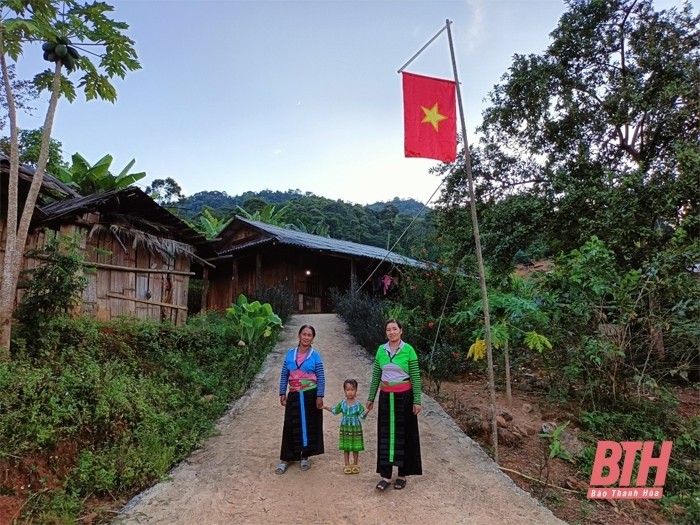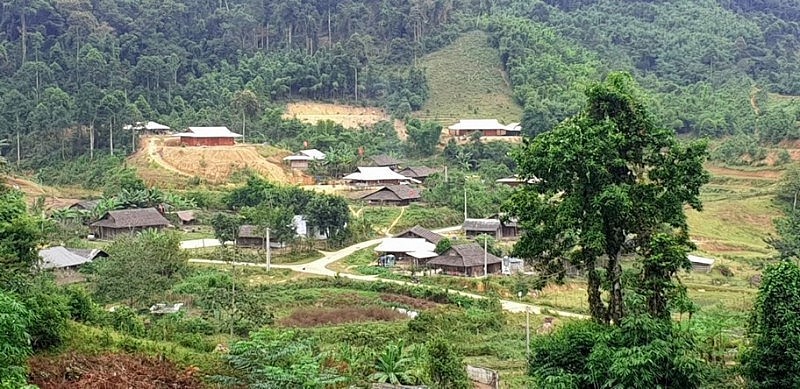
Thanh Hoa caring of Mong ethnic people
Latest
The central province of Thanh Hoa currently have more than 3,600 households of the Mong ethnic group with over 19,500 people, living in 44 villages of 10 border communes of 3 districts including Muong Lat, Quan Hoa, and Quan Son.
In recent years, the province has carried out a number of socio-economic development programmes and projects to give a facelift to areas where they live.
 |
| Mong ethnic people in Quan Son, Thanh Hoa province. (Photo: Thanh Hoa Newspaper) |
Che Lau, over 10km from the center of Na Meo commune of Quan Son district, is currently home to 65 households with 300 Mong people. It used to be a particularly disadvantaged village isolated from other localities due to its remote location and poor road conditions. Thanks to State investment in roads, electricity, schools, etc., Che Lau today has completely changed.
In 2020, under the Government’s Programme 30a on supporting fast and sustainable poverty reduction in poor districts, the People’s Committee of Quan Son district built a 5.1km road from Son village to Che Lau. Two years later, it sped up the construction of a road within Che Lau and another in Mua Xuan village of Son Thuy commune. The roads have been completed to facilitate locals' traveling.
In 2021, a pilot bamboo planting project covering 170ha was launched in Che Lau and has generated positive results so far. Under a sow farming project launched last year, 40 local households were provided with nearly 200 million VND (8,100 USD) in total financial assistance to participate in the farming. Thanks to such projects, per capita income has reached 28 million VND per year.
 |
| A view of Mong village in Son Thuy commune, Quan Son district. (Photo: H.M) |
Thao Van Lau, Secretary of the Party cell and head of Che Lau village, said that from a village of “four no’s” (no electricity, no roads, no schools, and no clinics), the life of local residents has improved gradually.
Secretary of the Party Committee of Na Meo commune Pham Duc Luong noted Che Lau is the first Mong ethnic village in Quan Son district to be recognized as the “village of culture”. Many households here have earned hundreds of millions of VND in annual income from animal farming.
Communal authorities have encouraged people to cultivate two crops of wet rice each year to guarantee food supply, he said, adding that Che Lau is expected to become a new-style rural village by 2025.
In Phu Son commune of Quan Hoa district, Suoi Ton village was almost inaccessible about 10 years ago, but now people can reach this rural area through a concrete road.
Over the last 10 years, thanks to the provincial administration’s strong investment, the active engagement of district and communal authorities, and the efforts of local residents, Suoi Ton has gradually gained a facelift. The roads to and within this village have been paved, infrastructure increasingly upgraded, and the site for preschool and primary education is well-built to meet local educational demand.
In the past, locals earned their living only from small-scale crop and animal farming. At present, the cultivation of wet rice and high-value crops has been promoted, resulting in higher economic value.
A number of houses are being repaired and built here. In 2022, three houses were constructed under the program on building houses for the underprivileged of the provincial Vietnam Fatherland Front Committee. This year, 16 more houses have been repaired or built thanks to the funding for the poor in particularly disadvantaged areas.
Nguyen Tuan Anh, Secretary of the Phu Son Communal Party Committee, said that authorities have promoted mass mobilization activities, especially in Suoi Ton village. Thanks to increased communications, locals have complied with the Party's guidelines and the State's policies and laws and adopted civilized practices in their funeral and wedding customs.
With 1.5 per cent of its population being Mong people, Thanh Hoa has fruitfully implemented many of the State’s programs and policies for ethnic minorities, including the national target program on socio-economic development in ethnic minorities and mountainous areas for 2021-2025. Besides, it has also issued a number of specific plans and policies such as those aiding the development of Mong people-inhabited areas.
As a result, a number of households in Mong ethnic villages across the province have enjoyed a better quality of material and spiritual life.

















